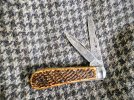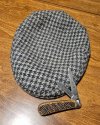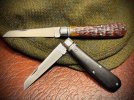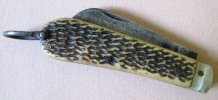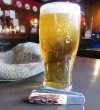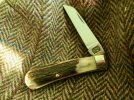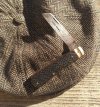-
The BladeForums.com 2024 Traditional Knife is available! Price is $250 ea (shipped within CONUS).
Order here: https://www.bladeforums.com/help/2024-traditional/
You are using an out of date browser. It may not display this or other websites correctly.
You should upgrade or use an alternative browser.
You should upgrade or use an alternative browser.
Flat-Cap Jigging!!
- Thread starter waynorth
- Start date
- Joined
- Dec 2, 2005
- Messages
- 71,350
In Sheffield, the style of check is referred to as Dog Tooth checkThat!!

Outstanding collection

History in the making CharlieLet's post Flat Caps too!!!View attachment 2756799
Here are my mockups for the label!! I chose the right hand button and label!!View attachment 2756801
I guess the Cat is completely out of the bag now!!

- Joined
- Dec 2, 2005
- Messages
- 71,350
- Joined
- Dec 2, 2005
- Messages
- 71,350
AusLoX
Platinum Member
- Joined
- Jan 23, 2015
- Messages
- 3,140
Cheers Jack!
Will Power
Gold Member
- Joined
- Jan 18, 2007
- Messages
- 33,647
dantzk8
Basic Member
- Joined
- Nov 1, 2005
- Messages
- 1,951
DaveHS
Gold Member
- Joined
- Nov 22, 2024
- Messages
- 5,304
I think the same thing about those bolsters! Dead sexyCharlie the jigging is great but I’m loving those bolsters! Sticking with tradition
Not my knife, I was tempted to buy it though.
View attachment 2756747
DaveHS
Gold Member
- Joined
- Nov 22, 2024
- Messages
- 5,304
JW225
Gold Member
- Joined
- Jan 13, 2021
- Messages
- 2,897
Very cool, Charlie! My own inclination might be to refer to this as "Herringbone" jigging -- which is the name of the weave used on Harris Tweed flat caps. The photo posted above by

Last edited:
Amir Fleschwund
Gold Member
- Joined
- Nov 29, 2008
- Messages
- 8,321
No name Japanese Fish Knife with American weave and Irish weave. I bought that one at Armstrong's in Edinburgh, so I have Japanese jigging on American and Irish wool (with a Scot's name written in ball point pen on the label), on caps that originated in Northern England- but I see the herringbone in the jigging. 
Excuse the font ~ it seems locked in from copying the paragraph below.
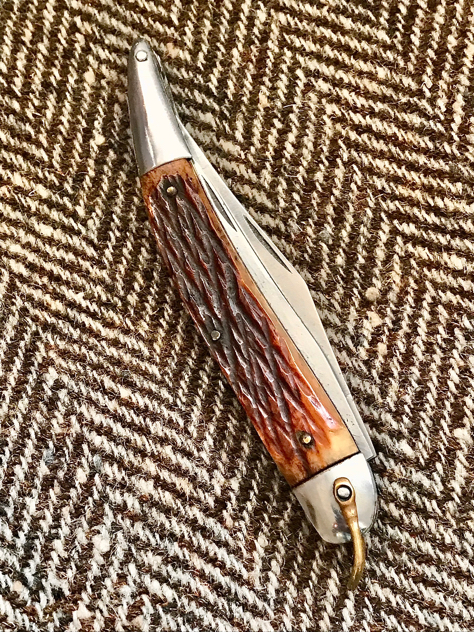
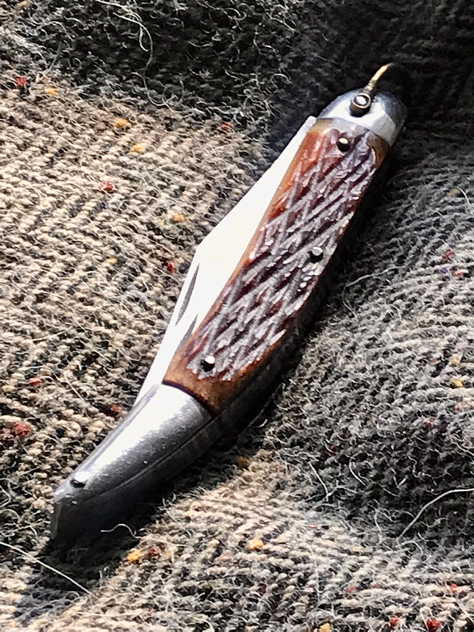
"In 1571, the Parliament in Northern England imposed a law that required all males over the age of six to wear woolen hats every Sunday and holiday. Any man or child who didn’t follow the law was fined a hefty three farthings. " ~ https://www.peakyhat.com/blogs/the-...WLYRZgXq3BVFWb44oFf85Jd8zvs8E_rEUtUyj2lOOwsjm


Vendor's website, but a few paragraphs on the origins of the flat cap.
wlfryjr
Gold Member
- Joined
- Oct 20, 2011
- Messages
- 1,982
Couple fine looking knives

Thanks David.
A good older friend and churchmate in my later life, was telling his teenage boys that these male headdresses were "courting hats".
I had a flat cap when I was 15 and my interest was beginning towards the female persuasion. One evening at a local restaurant another male trying equally to impress , looked at me, and didn't refer to my headdress as a flat cap or courting hat , but he said look at that donkey cap. I wasn't a pacifist at the time and a major fisticuffs erupted , during which we almost went through the restaurant's large glass window. Luckily we continued our contest outside and I ended up with a shirt ruined by his bloody nose and him with mostly wounded pride.
I continued wear my "donkey cap" for years , but after my 4 younger brothers , marriage and 7 moves in our first two years , the cap is long gone.
- Joined
- May 9, 2010
- Messages
- 10,339
Thanks David.
A good older friend and churchmate in my later life, was telling his teenage boys that these male headdresses were "courting hats".
I had a flat cap when I was 15 and my interest was beginning towards the female persuasion. One evening at a local restaurant another male trying equally to impress , looked at me, and didn't refer to my headdress as a flat cap or courting hat , but he said look at that donkey cap. I wasn't a pacifist at the time and a major fisticuffs erupted , during which we almost went through the restaurant's large glass window. Luckily we continued our contest outside and I ended up with a shirt ruined by his bloody nose and him with mostly wounded pride.
I continued wear my "donkey cap" for years , but after my 4 younger brothers , marriage and 7 moves in our first two years , the cap is long gone.
young lyle a rascal!
DaveHS
Gold Member
- Joined
- Nov 22, 2024
- Messages
- 5,304
Alex.Y.
Gold Member
- Joined
- Jan 11, 2021
- Messages
- 1,840
Thank you for the link! 'Tis very interesting.No name Japanese Fish Knife with American weave and Irish weave. I bought that one at Armstrong's in Edinburgh, so I have Japanese jigging on American and Irish wool (with a Scot's name written in ball point pen on the label), on caps that originated in Northern England- but I see the herringbone in the jigging.
Excuse the font ~ it seems locked in from copying the paragraph below.


"In 1571, the Parliament in Northern England imposed a law that required all males over the age of six to wear woolen hats every Sunday and holiday. Any man or child who didn’t follow the law was fined a hefty three farthings. " ~ https://www.peakyhat.com/blogs/the-...WLYRZgXq3BVFWb44oFf85Jd8zvs8E_rEUtUyj2lOOwsjm
Vendor's website, but a few paragraphs on the origins of the flat cap.
...The Parliament established the rule as an attempt to bolster the wool industry.
LOL! I imagined if someone found a need to bolster cutlery industry and used the same method nowadays.
waynorth
Dealer / Materials Provider
- Joined
- Nov 19, 2005
- Messages
- 33,422
These caps vary greatly from Herringbone, to Houndstooth, to Harris Tweed to a square basket weave, and to finer suit material. Traditionally they were made from the remnants from a suit-making endeavor!! It is great to see all the variations!!!
Makes me want to go out and find yet another hat!!
Makes me want to go out and find yet another hat!!
waynorth
Dealer / Materials Provider
- Joined
- Nov 19, 2005
- Messages
- 33,422
Real nice Hat and Knife, David!!!

